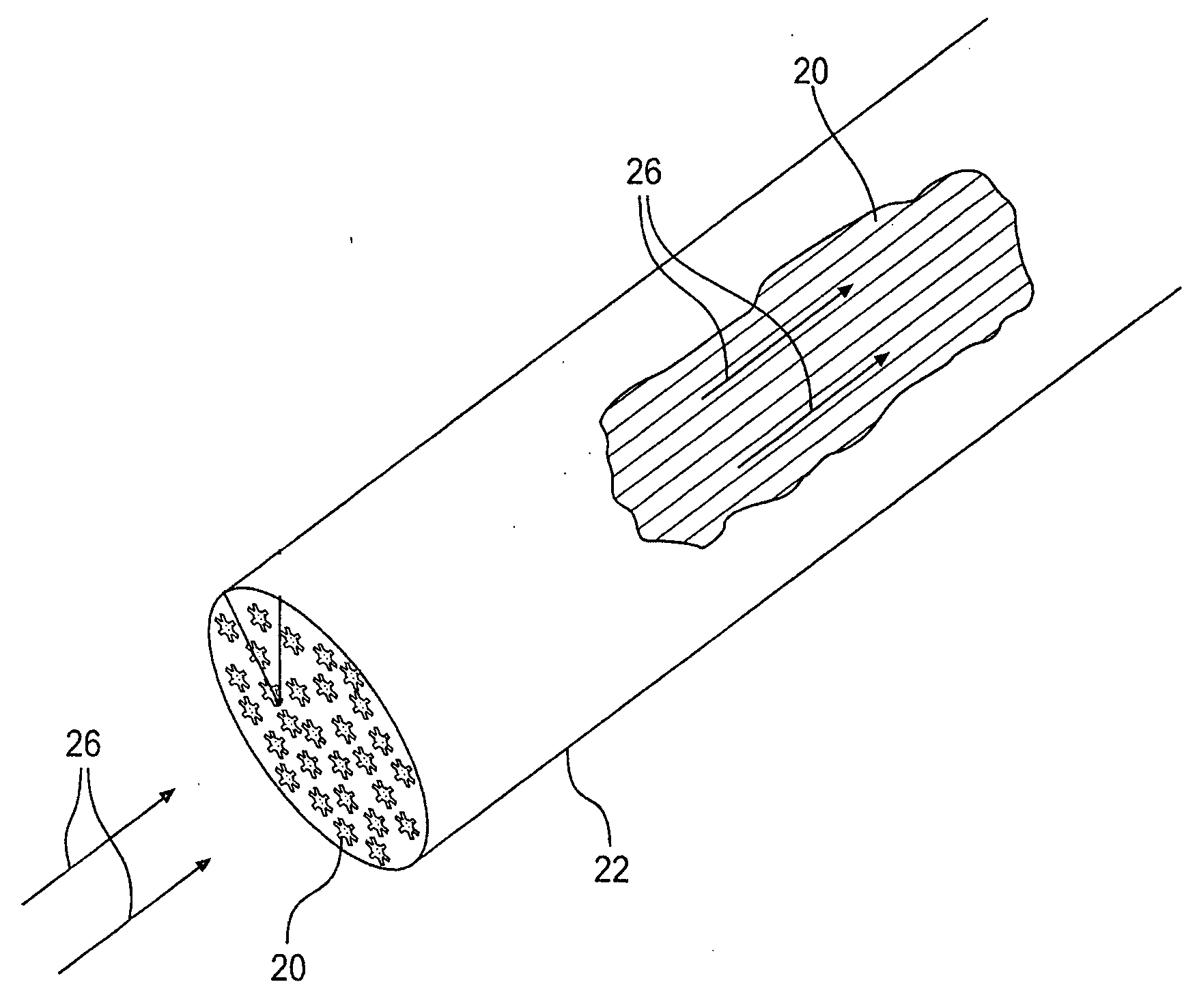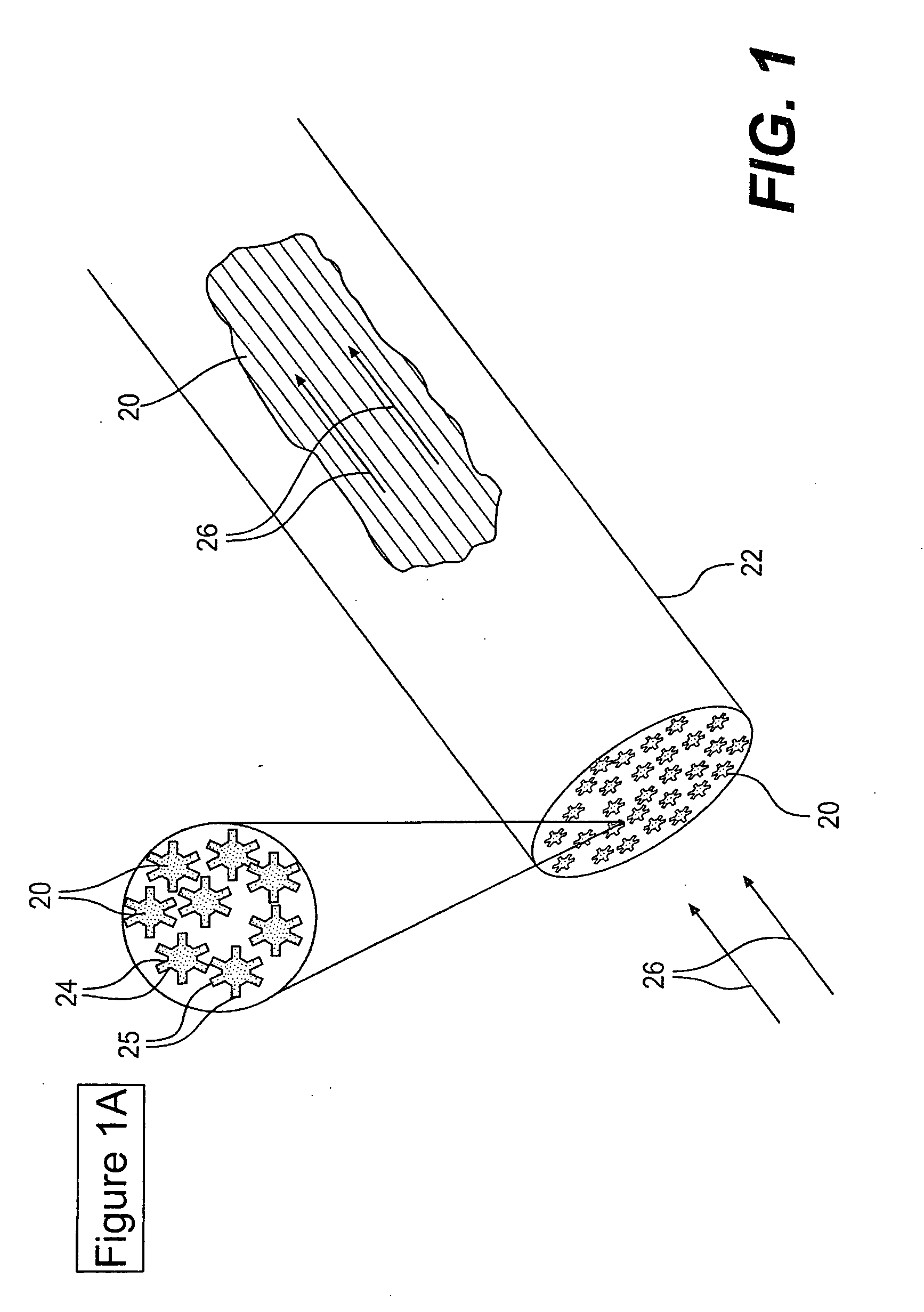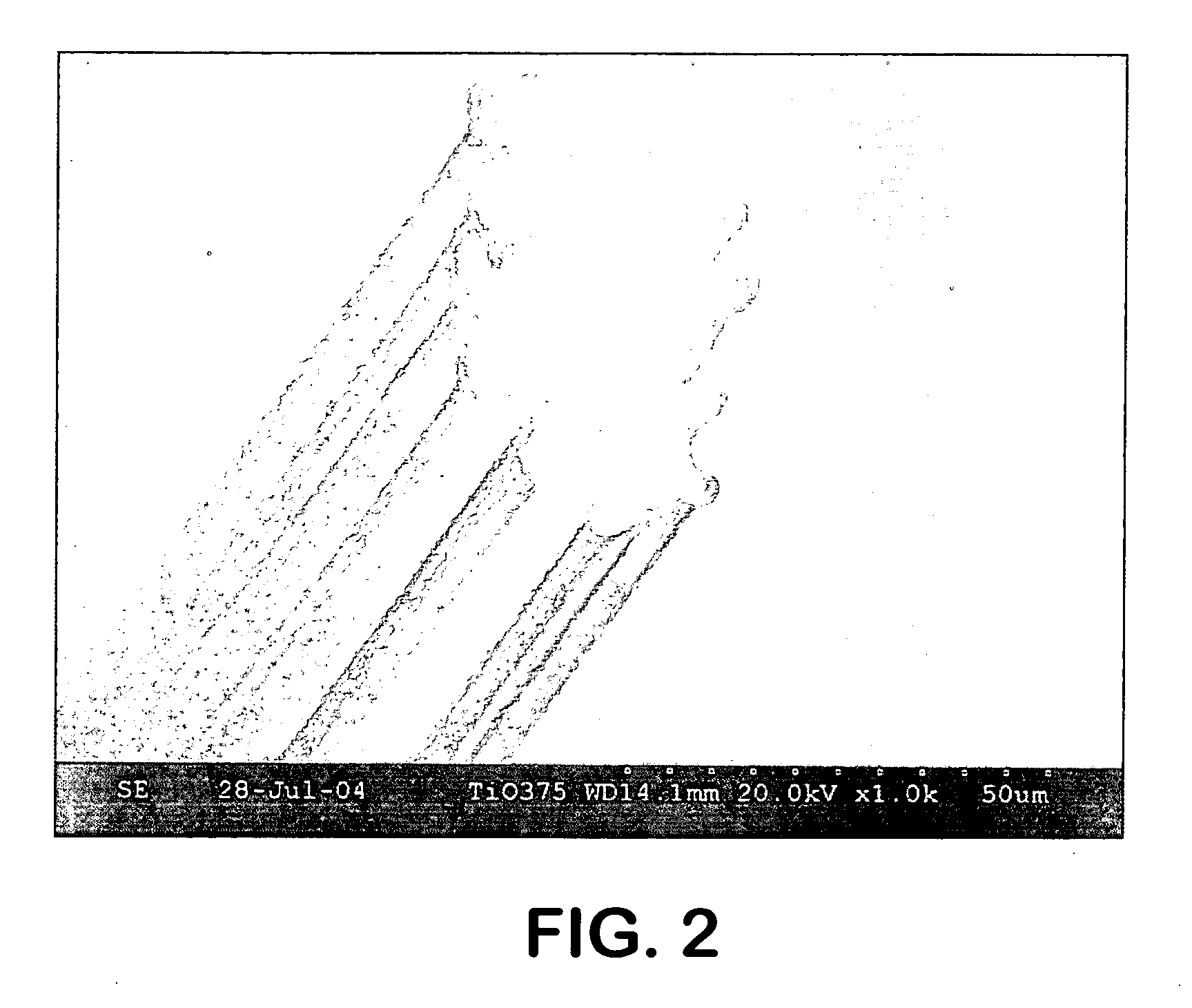Capillary-channeled polymeric fiber as solid phase extraction media
a polymeric fiber and solid phase technology, applied in the direction of biological material analysis, chemical/physical process, water/sewage treatment by ion exchange, etc., can solve the problems of many phases that are proposed for use with micropipette tips that can be quite fragile and easily damaged, and many of the phases that are proposed for use with micropipette tips are limited in possible chemistries. , to achieve the effect of good flow characteristics
- Summary
- Abstract
- Description
- Claims
- Application Information
AI Technical Summary
Benefits of technology
Problems solved by technology
Method used
Image
Examples
example 1
[0066] Capillary-channeled propylene fibers having nominal diameters of approximately 50 μm and 8 branched capillaries running along their length were examined for protein separations. The capillary-channeled fibers were obtained from Eastman Chemical, Kingsport, Tenn. from a bobbin of fibers measuring more than 1000 meters in length.
[0067] Bundles of approximately 1200 fibers were loaded co-linearly into 4.6 mm i.d., 306 mm long stainless steel tubing (available from Valco Instruments, Houston, Tex.). Bundles were passed through the column such that the general alignment of the fibers within the column was longitudinally parallel such that broadening due to eddy diffusion, i.e., tortuous paths, was expected to be minimal.
[0068] The fiber lengths were trimmed to be flush with the tubing ends, and the column ends were sealed with 0.75 mm thick, 6.35 mm diameter frits including 10 μm pores and completed with column end fittings (available from Valco Instruments). Each fiber column h...
example 2
[0073] Reagents used included lysozyme from chicken egg white, myoglobin from equine skeletal muscle, sodium chloride (NaCl), sodium phosphate dibasic (Na2HPO4), potassium phosphate monobasic (KH2PO4), Sigma 7-9® (tris base), and trizma® hydrochloride (tris acid) obtained from Sigma-Aldrich (Milwaukee, Wis.). Potassium chloride (KCl) and formic acid were obtained from Fisher Chemicals (Pittsburgh, Pa.). ACS grade acetonitrile (ACN) was obtained from Mallinckrodt Baker Inc. (Phillipsburg, N.J.) and used as an organic mobile phase. Nanopure Diamond® water (18.2 MΩ / cm) from Barnstead / Thermolyne Water Wystem (Dubuque, Iowa) was used in solution preparation for buffers and proteins and aqueous mobile phases.
[0074] Extraction conduits were assembled according to a procedure as illustrated in FIG. 3. In particular, the fibers were pulled through a 0.8 mm i.d. fluorinated ethylene polypropylene (FEP) tubing (available from Cole Parmer, Vernon Hills, Ill.). A fiber loop corresponding to a t...
PUM
| Property | Measurement | Unit |
|---|---|---|
| Length | aaaaa | aaaaa |
| Volume | aaaaa | aaaaa |
| Length | aaaaa | aaaaa |
Abstract
Description
Claims
Application Information
 Login to View More
Login to View More - R&D
- Intellectual Property
- Life Sciences
- Materials
- Tech Scout
- Unparalleled Data Quality
- Higher Quality Content
- 60% Fewer Hallucinations
Browse by: Latest US Patents, China's latest patents, Technical Efficacy Thesaurus, Application Domain, Technology Topic, Popular Technical Reports.
© 2025 PatSnap. All rights reserved.Legal|Privacy policy|Modern Slavery Act Transparency Statement|Sitemap|About US| Contact US: help@patsnap.com



